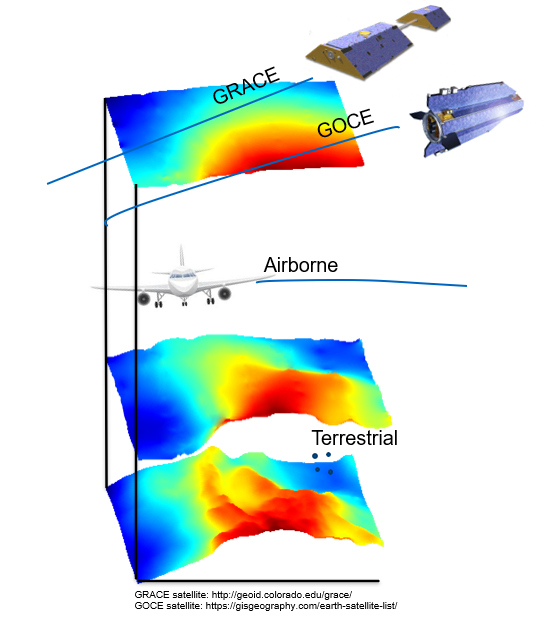Combining heterogeneous observations in regional gravity field modeling

Gravity field determination is a major topic in geodesy, supporting applications from Earth system science, orbit determination or the realization of physical height systems. Coarse resolution global gravity field information from satellite observations can be combined with high-resolution gravity data from airborne, shipborne, or terrestrial measurements for regional gravity refinement. In this process, regularization is in most cases inevitable, and choosing an appropriate value for the regularization parameter is a crucial issue. Variance component estimation (VCE) and L-curve method are two frequently used procedures for choosing the regularization parameter.
VCE simultaneously determines the relative weighting between different observation types and the regularization parameter. The prior information is regarded to be another observation type and is required to be stochastic. However, in most of the regional gravity modeling studies, a background model serves as prior information, which has no random character but is deterministic. In this case, the regularization parameter estimated by VCE can be unreliable. On the other hand, the L-curve method (or other conventional regularization methods) cannot weight heterogeneous observations.
To overcome these drawbacks, scientists of DGFI-TUM developed two ‘combined approaches’ for the regularization parameter determination when different data sets are to be combined. The two approaches combine VCE and the L-curve method in such a way that the relative weights are estimated by VCE, but the regularization parameters are determined by the L-curve method. They differ in whether determining the relative weights between each observation type first (VCE-Lc) or the regularization parameter by the L-curve method first (Lc-VCE). Numerical investigations show that these two proposed approaches deliver lower RMS errors with respect to the validation data than the L-curve method and VCE do. Details are provided in the recent article Determination of the Regularization Parameter to Combine Heterogeneous Observations in Regional Gravity Field Modeling (Remote Sensing, 2020, doi: 10.3390/rs12101617, [PDF]).
Arcisstraße 21
80333 München